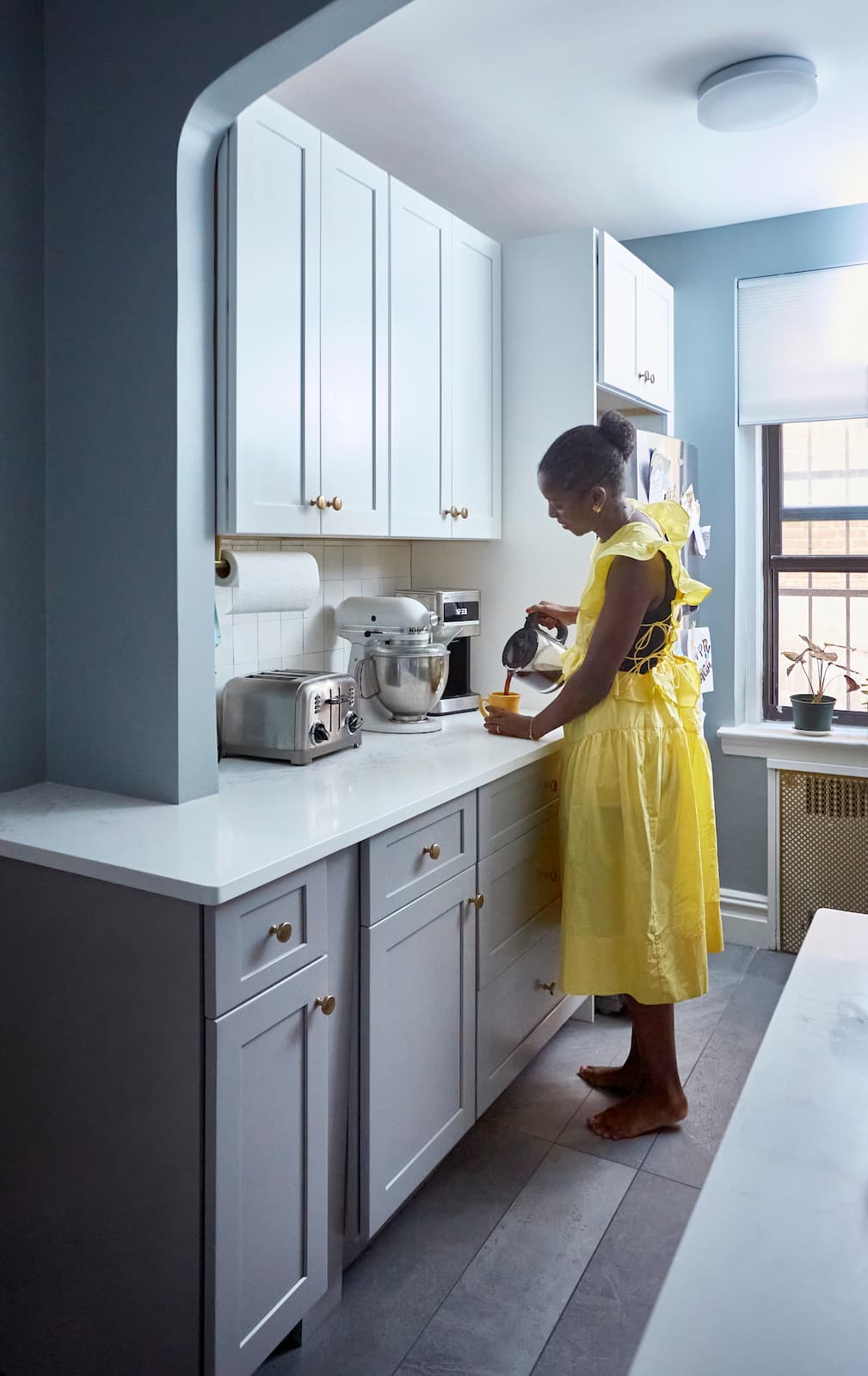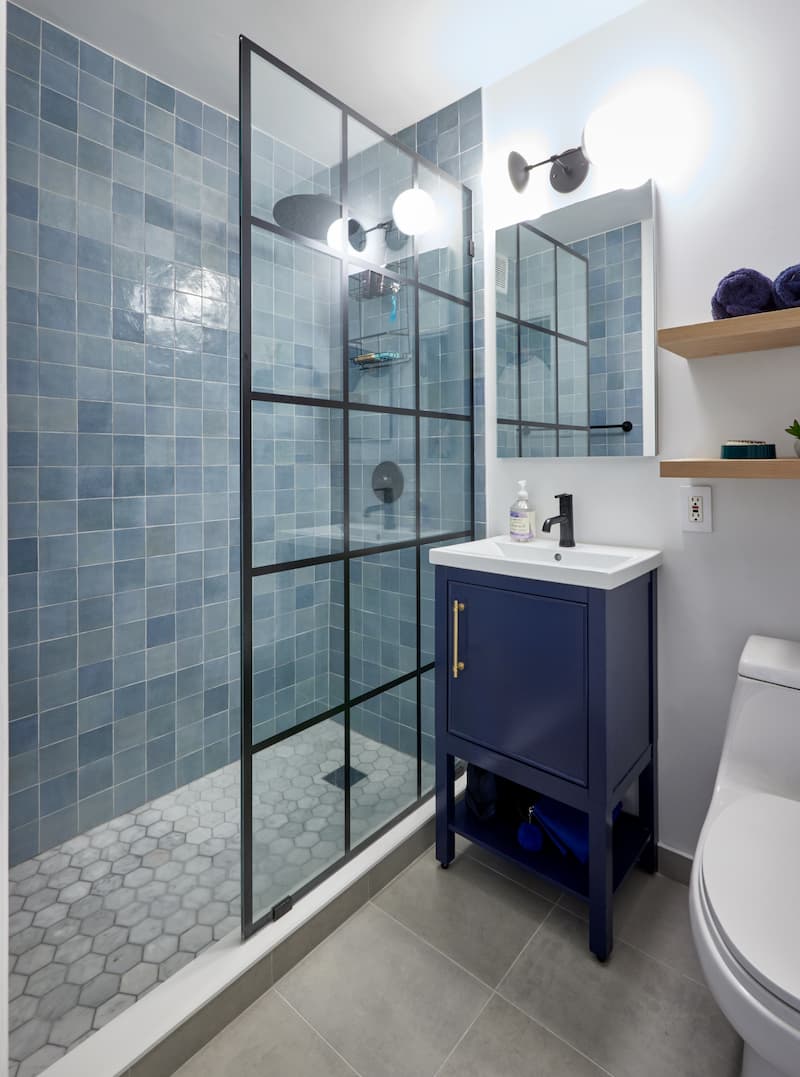How to Add a Bedroom to Your House: Layout Tips & Expert Ideas

In This Article
Whether your family is growing, you need a dedicated guest room, or you’re looking to boost your home’s value, adding an extra bedroom is a smart investment. There are many ways to create a new bedroom, from reimagining your existing layout to building a full addition. Each approach comes with its own set of requirements, benefits, and challenges.
Here, we’ll break down the most effective strategies for adding a bedroom, highlight the pros and cons of each, and share how working with Block Renovation’s expert designers and contractors can make the process seamless and rewarding.
Bedroom Requirements: Minimum Sizing, Egress, and More
Before you start planning, it’s important to understand what makes a legal and comfortable bedroom. Most building codes require a minimum square footage—often around 70 to 80 square feet—and a minimum width, typically at least 7 feet in any direction. Bedrooms must have two means of egress, usually a door and a window large enough for emergency escape, to ensure safety.
Bonus nice-to-haves include a dedicated closet, which is often expected by buyers and can make the space more functional. Soundproofing is another valuable upgrade, especially if the new bedroom will be adjacent to busy living areas or bathrooms. Meeting these requirements not only keeps your project code-compliant but also ensures the new bedroom is comfortable and appealing.
Pros: Ensures safety, comfort, and resale value; meets code requirements.
Cons: May limit where you can add a bedroom; can require additional construction for egress or closets.
Adding an Extra Bedroom Without Expanding Your Footprint
If you want to avoid the cost and complexity of a home addition, there are several creative ways to carve out a new bedroom within your existing space. These solutions are often faster, more affordable, and less disruptive than building out.
Move Walls for a Condo-Friendly Solution
In many homes and condos, some rooms—like oversized living rooms, dining areas, or master suites—can be reconfigured to create an extra bedroom. By moving or adding walls, you can divide a large space into two functional rooms. This approach is especially popular in condos, where expanding the footprint isn’t an option.
The process typically involves erecting new drywall to create the additional room, installing or relocating doors, and possibly running new electrical wiring for outlets and lighting. You may also need to adjust heating or cooling vents and ensure the new space meets building codes for ventilation and egress. While this type of renovation is generally less invasive than an addition, it’s important to plan carefully—think about how the change will affect natural light, traffic flow, and the overall feel of your home.
Pros: No need for exterior construction; often more affordable; preserves outdoor space.
Cons: May require HOA approval in condos; can reduce the size of existing rooms; may impact natural light or flow.
Convert Your Attic
Attics are often underutilized and can be transformed into charming, functional bedrooms with the right upgrades. The first step in an attic conversion is to assess the space for structural integrity and headroom—most building codes require at least 7 feet of vertical clearance over a certain percentage of the room. If your attic meets these requirements, you’ll likely need to reinforce the floor to support regular use and add high-quality insulation to keep the space comfortable year-round, as attics are prone to temperature extremes.
Flooring installation is another key step, often involving subfloor repairs or upgrades to ensure stability and soundproofing. Natural light is crucial in attic bedrooms, so adding windows or skylights not only brightens the space but also provides the necessary egress for safety. You’ll also need to plan for a safe, code-compliant staircase—spiral or space-saving stairs can work well in tight areas.
Electrical wiring, heating and cooling, and sometimes even plumbing (if you’re adding an ensuite bathroom) must be carefully planned and executed. While attic conversions can be a significant investment, they often add substantial value to your home, especially in older properties with generous rooflines. With thoughtful design, an attic bedroom can become a cozy, private retreat that feels both unique and inviting.
Pros: Makes use of unused space; can add privacy; increases home value while being less costly than other ideas for building extra bedrooms.
Cons: May require structural reinforcement; may have low ceilings or awkward layouts.
Read The Complete Guide to Attic Renovation Costs to explore this idea further.
Convert Your Basement
Basements offer a great opportunity for adding an extra bedroom, particularly in homes where expanding outward or upward isn’t practical. However, turning a basement into a comfortable, code-compliant bedroom requires careful planning and attention to detail. The first and most critical step is addressing moisture control—basements are naturally prone to dampness, so it’s essential to invest in waterproofing measures such as sump pumps, vapor barriers, and proper drainage systems. This not only protects your investment but also ensures a healthy living environment free from mold and mildew.
Once moisture is under control, adding high-quality insulation to the walls and floors is key to maintaining a comfortable temperature year-round, as basements can be cooler than the rest of the house. You’ll also need to ensure the space meets building codes for safety, which typically means installing an egress window or exterior door large enough for emergency escape. This may require cutting into the foundation and building a window well, which can add to the project’s complexity and cost but is non-negotiable for both safety and legal reasons.
Beyond the basics, thoughtful design choices can make a basement bedroom feel just as inviting as any other room in your home. Consider using light, reflective colors to brighten the space, installing layered lighting to compensate for limited natural light, and choosing durable, moisture-resistant flooring. Soundproofing the ceiling can also help create a peaceful retreat, especially if the basement is below active living areas. With the right approach, a basement bedroom can be a quiet, private, and highly functional addition that adds significant value and flexibility to your home.
Pros: Utilizes existing square footage; can be quiet and private; often increases resale value.
Cons: May require significant waterproofing; can feel dark or cold without proper design; egress requirements can add cost.
Read How Much Does Finishing a Basement Cost
Convert Your Garage
If you have an attached or detached garage, converting it into a bedroom can be an efficient way to gain valuable living space without altering your home’s overall footprint. However, this type of renovation is more involved than simply placing a bed in the garage. The process typically begins with a thorough assessment of the garage’s structure and foundation to ensure it can support regular residential use. Most garages are not built to the same standards as living spaces, so you’ll likely need to upgrade insulation in the walls, ceiling, and possibly the floor to create a comfortable, energy-efficient environment that’s protected from temperature extremes.
Adding windows is essential—not only to bring in natural light and make the space feel inviting, but also to meet building codes for ventilation and emergency egress. You may need to replace the garage door with a framed wall and windows, or convert part of the opening into a new entryway. Connecting the new bedroom to your home’s HVAC system is another important step, as garages are rarely heated or cooled; this may involve extending ductwork or installing a mini-split system for independent climate control. Electrical upgrades are also common, since garages often lack sufficient outlets and lighting for a bedroom.
It’s important to consider the trade-offs: converting your garage means sacrificing covered parking or storage, which can affect your home’s resale value—especially in regions where parking is at a premium. You’ll also want to ensure the exterior of the converted garage blends seamlessly with the rest of your home for curb appeal. With careful planning, quality construction, and attention to both comfort and code, a garage conversion can provide a spacious, private bedroom that meets your family’s needs and enhances your home’s functionality.
Pros: Adds usable living space; can be more affordable than a full addition; often has easy access to utilities.
Cons: Loss of garage space; may require significant upgrades; can affect curb appeal or zoning compliance.
Read The Complete Guide to Garage Remodel Costs and How to Convert a Garage into a Master Bedroom Suite to dive deeper into this particular idea.
General Tip: Reshuffle Your Room Functions
Sometimes, the simplest solution is to rethink how you use your existing rooms. This flexibility can both free up existing space to become a bedroom, as well as broaden the type of renovations you can do to increase your house’s livability; for example, a porch converted into a sunroom may not be a practical bedroom solution, but the new sunroom could be well-suited for a playroom or office.
Renovate with confidence every step of the way
Step 1: Personalize Your Renovation Plan
Step 2: Receive Quotes from Trusted Contractors
Step 3: Let Us Handle the Project Details

Adding an Extra Bedroom With Building Expansions
If your lot and budget allow, expanding your home’s footprint is a classic way to add a bedroom. These projects are more involved but can dramatically increase your home’s value and functionality.
“Bump Out” Expansions
A “bump out” is a small-scale home addition that extends an existing room or creates a new one by projecting a section of the house outward, typically by just a few feet. Unlike a full-scale addition, a bump out often doesn’t require a complete foundation, which can make the process faster, less invasive, and more cost-effective. This approach is especially popular for homeowners who want to add a bedroom or expand a cramped space without undertaking a major construction project. Bump outs can be cantilevered—meaning they’re supported by the existing structure—or built on a simple concrete slab, depending on the size and local building codes. The result is a seamless extension that blends with your home’s original footprint while providing valuable extra square footage.
Pros: Adds targeted space; can be less expensive than a full addition; often faster to complete.
Cons: Still requires permits and construction; may be limited by zoning or lot size; can disrupt your home during the build.
Build a Room Above the Garage
Building a bedroom above an existing garage is an efficient way to expand your home’s living space without sacrificing any of your yard or outdoor areas. This type of vertical addition is especially appealing for properties with limited lot size or in neighborhoods where expanding outward isn’t possible due to zoning restrictions. The new space can be designed as a spacious bedroom, a guest suite with a private bath, or even a multi-purpose area for teens or extended family. Because it’s set apart from the main living quarters, a room above the garage naturally offers more privacy and quiet, making it ideal for older children, guests, or even as a rental suite.
However, constructing a room above a garage comes with unique considerations and challenges. The garage’s existing structure may need to be reinforced to support the additional weight, and you’ll need to ensure proper insulation and soundproofing to address temperature fluctuations and noise from vehicles below. Access is another key factor—adding a staircase or hallway that connects seamlessly to the rest of the house is essential for both convenience and safety. Integrating heating, cooling, and electrical systems into the new space can also add complexity and cost.
Pros: Maximizes vertical space; adds significant square footage; can be designed for privacy.
Cons: Can be costly; may require structural reinforcement; can be noisy if not well insulated.
ADU Additions
Accessory Dwelling Units (ADUs) are self-contained living spaces built on your property, either attached or detached from your main home. Adding an ADU can provide a bedroom plus a bathroom and kitchenette, making it perfect for guests, extended family, or rental income.
Building an ADU is a significant project that requires careful planning and a clear understanding of local zoning laws, permitting processes, and design requirements. You’ll need to consider factors such as lot size, setbacks, utility connections, and accessibility, as well as how the new structure will complement your existing home and neighborhood.
Pros: Adds flexible, independent living space; potential for rental income; increases property value.
Cons: Requires significant investment; subject to local zoning and permitting; may take longer to complete.
Partner With Knowledgeable Interior Designers & Contractors
No matter which approach you choose, working with experienced professionals can make all the difference in the success of your project. From code compliance to creative design, the right team will help you navigate every step with confidence.
The Role of an Interior Designer
With Block Renovation, our interior designers specialize in turning your vision into a practical, beautiful reality. They’ll help you make the most of your space, select finishes and layouts that maximize comfort and style, and ensure your new bedroom feels cohesive with the rest of your home. Designers can also help you solve tricky layout challenges, recommend storage solutions, and create a space that adapts to your family’s needs. With Block, you get access to design expertise that’s both creative and grounded in real-world experience.
Learn about our Interior Design Services
Finding the Right General Contractor
Choosing a skilled general contractor is essential for a smooth, successful bedroom addition. Block Renovation connects you with thoroughly vetted contractors who have a proven track record in your area and experience with projects just like yours. Your contractor will manage permits, coordinate trades, and keep your project on schedule and on budget. With Block’s support, you can feel confident that your new bedroom will be built to the highest standards—on time, on budget, and with your vision at the center.
Turn your renovation vision into reality
Get matched with trusted contractors and start your renovation today!
Find a Contractor

Written by Block Renovation

Renovate confidently with Block
Easily compare quotes from top quality contractors, and get peace of mind with warranty & price protections.
Thousands of homeowners have renovated with Block

4.5 Stars (100+)

4.7 Stars (100+)

4.5 Stars (75+)
Renovate confidently
- Top quality contractors
- Warranty & price protections
- Expert resources

